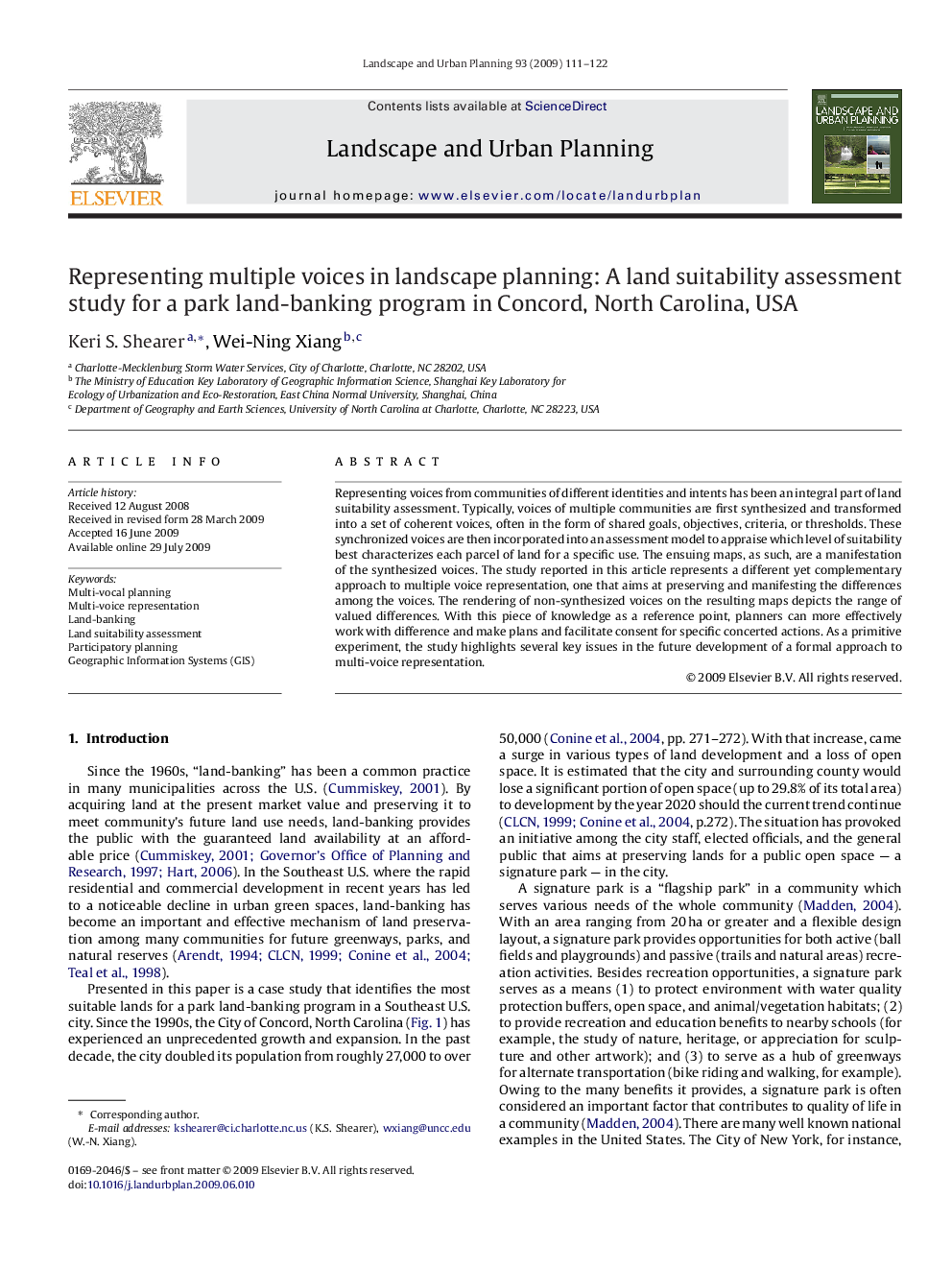| Article ID | Journal | Published Year | Pages | File Type |
|---|---|---|---|---|
| 1050116 | Landscape and Urban Planning | 2009 | 12 Pages |
Representing voices from communities of different identities and intents has been an integral part of land suitability assessment. Typically, voices of multiple communities are first synthesized and transformed into a set of coherent voices, often in the form of shared goals, objectives, criteria, or thresholds. These synchronized voices are then incorporated into an assessment model to appraise which level of suitability best characterizes each parcel of land for a specific use. The ensuing maps, as such, are a manifestation of the synthesized voices. The study reported in this article represents a different yet complementary approach to multiple voice representation, one that aims at preserving and manifesting the differences among the voices. The rendering of non-synthesized voices on the resulting maps depicts the range of valued differences. With this piece of knowledge as a reference point, planners can more effectively work with difference and make plans and facilitate consent for specific concerted actions. As a primitive experiment, the study highlights several key issues in the future development of a formal approach to multi-voice representation.
